
 |
|
|
#1 |
|
All the news that's fit to excerpt
Name: newsie
Location: who knows?
Join Date: Jun 2008 Motorcycle(s): only digital replicas Posts: Too much.
|
[motorcycle.com] - The $17,000 Superbike Faceoff
 Look around the liter-class sportbike landscape. The field is littered with some of the most technologically advanced and blindingly fast motorcycles the world has ever seen. Trickle-down technology from the world of MotoGP and World Superbike is making its way to production motorcycles faster than ever before, and it’s hard to deny the sportbike landscape is all the better for it. Get the Flash Player to see this player. Considering how fast, how advanced, and how downright amazing today’s literbikes are, how much would you expect to pay for such performance? Twenty grand? Forty? More? Taking into account the cost of today’s fastest hypercars, which can’t hold a candle to today’s literbikes in terms of sheer acceleration, even paying $50,000 can seem like a relative bargain. Luckily for us, we can get our hands on these amazing two-wheeled rocketships for $17,000 – and have some change left over – and that’s exactly what we have here. Arguably the most anticipated Japanese sportbike of 2016 – and a bike the MO staff had yet to ride – the new Kawasaki ZX-10R is all the buzz this year. Featuring entirely updated electronics centered around a five-axis IMU, a lighter, more powerful engine, and a Showa 43mm Balance Free Fork adapted from the World Superbike paddock, our test Zed, kitted with ABS and the KRT paint scheme costs $16,299, only $200 less than the Aprilia ($16,499). Our Australian correspondent, Jeff Ware, covered the bike in very thorough detail, which you can read about here. 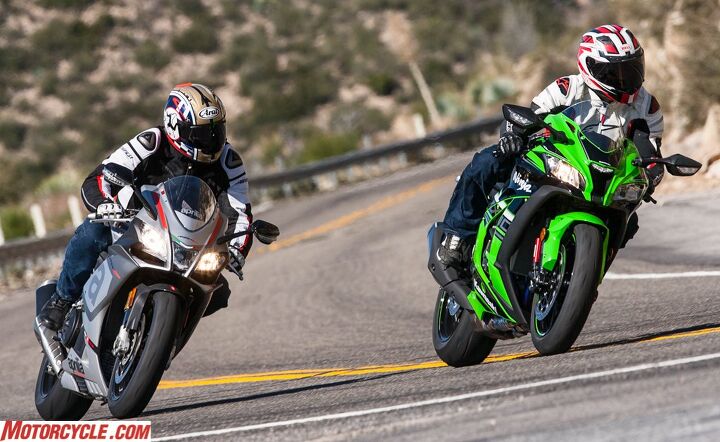 One of our favorite literbikes has now come under threat from a new Japanese challenger. Whichever way you lean, now is a great time to be a sportbike enthusiast. One of our favorite literbikes has now come under threat from a new Japanese challenger. Whichever way you lean, now is a great time to be a sportbike enthusiast.Readers of our three-part 2015 Six-Way Superbike Shootout (Track, Street, Overall) will recall the BMW S1000RR took top honors in our test by the narrowest of margins, with the Aprilia RSV4 RF hot on its heels. Both bikes, as tested, spill well over the cap set for this test, and though the base version S1000RR is listed for $16-large ($15,695, to be exact), good luck actually finding one in the wild. BMW didn’t even have one available for us to test. Here’s where things get interesting. Aprilia’s lower-spec version of the RSV4 RF, the RSV4 RR, costs just $16,499 and unlike RSV4s of the past, is largely the same as its top-shelf sibling, even sharing the exact same engine with titanium valves, variable-length intake funnels, CNC-machined combustion chambers, and upgraded exhaust system. Even the electronics package doesn’t change. The difference between the two is that the RR isn’t limited in its production (only 200 RF models are coming to North America), the RR uses Sachs suspension instead of the Ohlins on the RF, cheaper (and heavier) cast aluminum wheels on the RR replace the forged units on the RF, and the RR uses plastic body panels in areas where the RF uses carbon fiber. 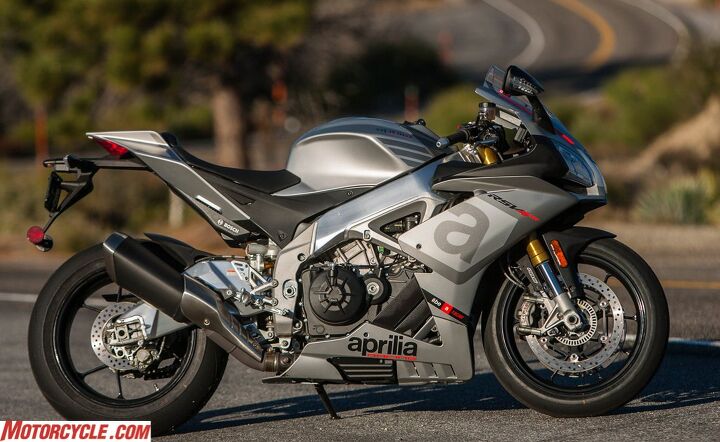 The “poor man’s” Aprilia RSV4, the RR version here is anything but cheap. And that’s a good thing. The “poor man’s” Aprilia RSV4, the RR version here is anything but cheap. And that’s a good thing.Considering our price cap, how well the RF did in last year’s Superbike test, the fact BMW couldn’t get us a standard S1000RR, and that we hadn’t yet tested the RSV4 RR, it was a natural pick to go up against the latest Green Ninja. E-i-C Kevin Duke outlines the major changes to the RSV4 line in 2016 in his RSV4 RF First Ride review here. Racetrack Rippers Both of these machines are designed and bred on the track, so it’s a natural starting point for this test. With 170-plus horsepower each, there aren’t very many locations in the SoCal area where we can properly stretch the legs of both of these fire breathers. That’s where the fine folks at Fastrack Riders come in. Fastrack has long been the organization to turn to when it comes to riding at Auto Club Speedway in Fontana, California. The course has been used to host AMA rounds in the past, and the utilization of its NASCAR straight makes it one of the few tracks in SoCal where riders can actually use sixth gear on a 1000cc sportbike. The organization is under new ownership now, but providing a safe and fun environment to ride your motorcycle is still top priority. Whether you’re a new track rider or an experienced vet, Fastrack has a level for you and instructors who can help show you some tips and tricks, including occasional celebrity pro instructors like Eric Bostrom. Gear rental is available, as are new-rider schools for track noobs. With memberships, discount packs, and even the Fastrack Academy offering a chance to compete for a new KTM RC390, Fastrack Riders is more than just a trackday organization. 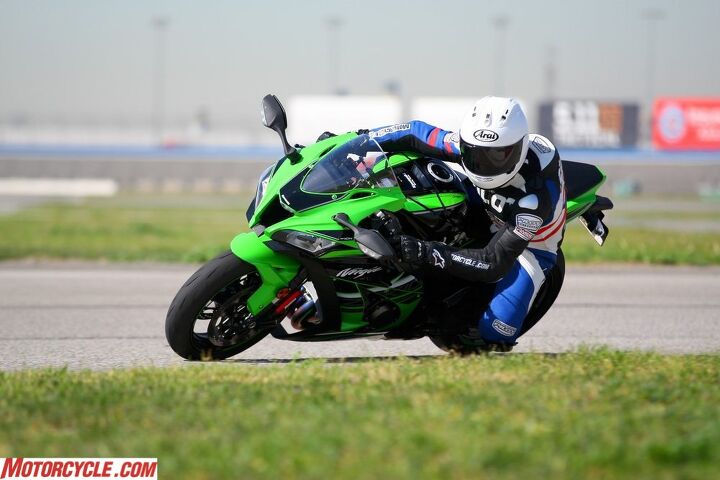 The new ZX-10R impresses with its cornering stability and front-end confidence. The new ZX-10R impresses with its cornering stability and front-end confidence.But a trackday is all we needed for this test. The RSV4 RR could be considered a favorite here, taking into account how well past iterations of RSV4 have done in the past. Its agile handling and lovable engine are both entities we know and love about the bike. Both Tom “Mr. Excuses” Roderick and I were amazed that, even at 462 lbs – 8 lbs more than the Kawasaki – the RR handles as well as it does. Direction changes require little effort, while feedback and chassis stability are rock solid. In short, it felt like we could confidently put the bike anywhere we wanted to. “What can I say that we haven’t already said about Aprilia’s RSV4?” asks Tom. “No matter what edition we’re testing, the RSV4 exhibits the most confidence-inspiring handling manners of any sportbike in existence. Quick transitions or long, fast sweepers, the RSV goes about the business of cornering like a Beverly Hills plastic surgeon wielding a scalpel.” Of course, this shouldn’t come as a surprise to anyone. The motorcycle press, including (especially?) MO have said as much over the years. What’s maybe the big surprise here is that the ZX-10R is nearly as good. Both Roderick and I were impressed with the Kawasaki’s stability leaned over, and the feedback provided by the new Balance Free Fork. Side-to-side flicks still favor the Aprilia, but the difference would only be noticeable when riding both bikes back to back. 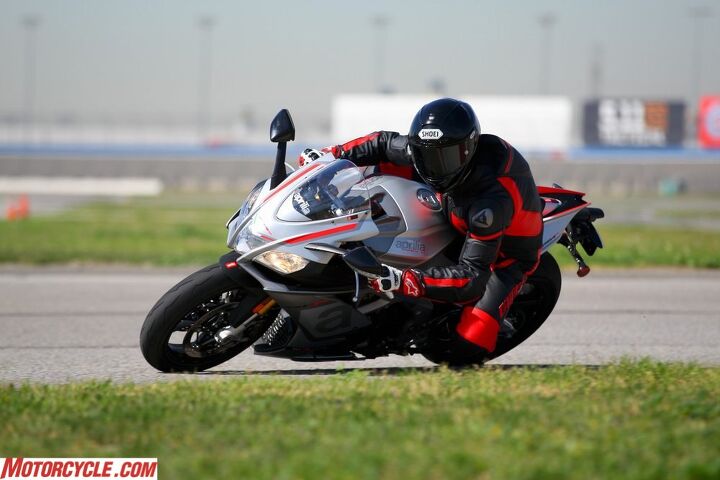 As sweet as the Kawasaki is, it’s still can’t match the balance, stability, and nimbleness provided by the RSV4. As sweet as the Kawasaki is, it’s still can’t match the balance, stability, and nimbleness provided by the RSV4.The ZX-10R claws back ground to the Ape thanks to its Brembo M50 calipers and 330mm discs (Brembo M430 clamps and 320mm discs come on the RR). At the risk of sounding like a broken record, we’ll say it again: the M50s are nothing short of awesome. Braking power, modulation and feel are mindblowing, allowing the rider to confidently trailbrake to any apex they desire with exact precision. To its credit, the Aprilia’s brakes are nearly as good, but don’t quite measure up. Switchable ABS comes on both bikes (and the Kawi is available without ABS entirely). With the chassis and braking systems being so close on both supersports, the decider here are the engines. Kawasaki made a number of changes to the 10R’s engine (again, see Ware’s exhaustive review for full details), allowing it to spin easier and breathe freer in an effort to pump out more power compared to the model it’s replacing. Kawi succeeded, too, as our ZX-10R test bike put out 170.0 hp at 11,900 rpm and 76.3 lb-ft at 11,500 rpm to the wheels when measured on the Hypercycle Dynojet dyno. This compared to the 160.6 hp at 11,700 rpm and 73.6 lb-ft at 11,200 rpm of the outgoing model we dyno’d last year on the MotoGP Werks Dynojet dyno. Keen observers will notice the new 10R reaches its peak power at slightly higher rpm than the old model, a further nod to its racetrack orientation. Impressive as the 10R’s new found power might be, it’s still trumped by the Aprilia, its V-4 engine making 179.5 hp at 13,700 rpm and 77.5 lb-ft at 10,500 rpm. Better still, a look at the dyno chart will show that the Italian outclasses the Kawi at nearly every point on their respective rev ranges. This is more than just dyno chart fodder, too – the difference in power is obvious from the saddle. Auto Club’s point-and-shoot turns means the rider is scrubbing a lot of speed down to the apex, then launching themselves out after, not leaving a lot of room for maintaining corner speed. 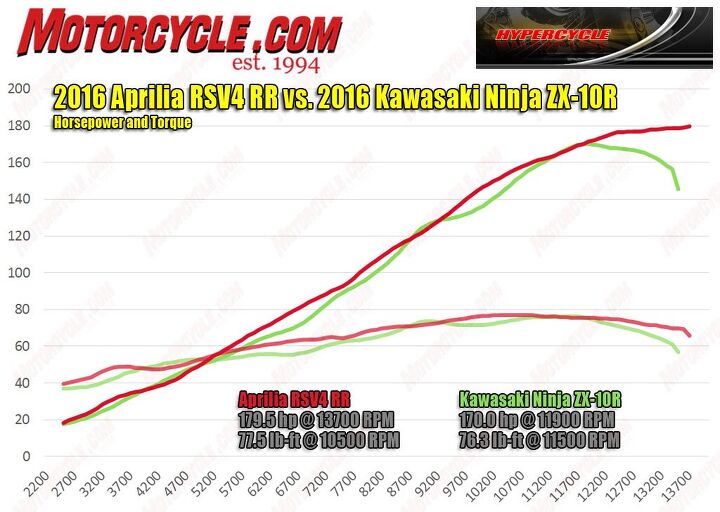 Kawasaki’s efforts to increase horsepower succeeded, but at the cost of low- to mid-range power. Not only does the Aprilia make more power and torque, but it does so at virtually every point on the graph. That’s a difference you can feel on the road. Kawasaki’s efforts to increase horsepower succeeded, but at the cost of low- to mid-range power. Not only does the Aprilia make more power and torque, but it does so at virtually every point on the graph. That’s a difference you can feel on the road.It’s at these corner exits that both Tom and I noticed a lag of power from the Kawi until about 8000 rpm, when a sudden boom in horses would kick in. Clicking down to first gear solves the waiting game, but comes with the drawback of needing to be incredibly delicate with the throttle or risk being propelled forward faster than you anticipate (assuming the tire grips) or, depending on your traction control settings, launched over the highside (assuming the tire does not). This top-heavy power output results in “the Ninja’s biggest detriment,” says Tom. “This is made more obvious when there’s an Aprilia RSV4 RR to climb aboard with more mid-range power that makes second gear corner exits something to look forward to,” T-Rod adds. It’s true, the difference in mid-range power between the two is blatantly clear when exiting slower-speed corners in second gear. Whereas the Kawi is working on building up its power, the Aprilia has the grunt down low to cleanly pull away and the heft up top to stay ahead. Then, of course, there’s the music each engine makes. “Subjectively, the sound emanating from the Aprilia’s pipe is a cacophony of the most ear-pleasing mechanical symphony to exit a stock exhaust,” Tom opines. 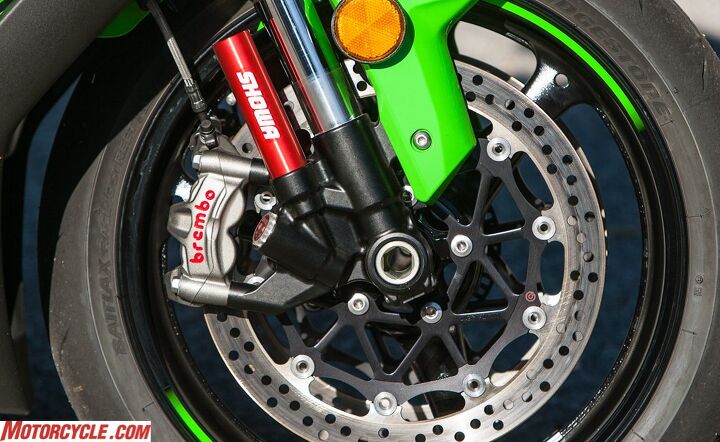 Showa’s Balance Free Fork, tech taken from the World Superbike paddock, performed well in both street and track environments, though the Brembo M50 calipers are the stars of this picture. Showa’s Balance Free Fork, tech taken from the World Superbike paddock, performed well in both street and track environments, though the Brembo M50 calipers are the stars of this picture.Transmissions are pretty evenly matched between the two. Both offer quickshifters (a first for Kawasaki outside the H2/H2R), with the Aprilia’s cleaner going up while the Green Machine down changes a hair slicker. Both bikes offer superb slipper clutches that make sixth-to-first downshifts a non-issue. A discussion about top-class literbikes on track can’t end without mentioning electronics, and both bikes shine here, too. The addition of Bosch’s five-axis Inertial Measurement Unit (IMU) has opened up the ZX-10R’s technological capabilities, and the tech most felt on the track was the heavily updated S-KTRC (Kawasaki’s term for traction control) which now features a hybrid predictive/reactive set of algorithms to better limit slip while still providing drive. Riding on the stock Bridgestone RS10 R rubber on the ZX, and with so much power on tap, getting the rear to start spinning isn’t a difficult task. But with the TC set in the number 3 setting (of five), just enough slide is initiated to tell the rider to back off a smidge while still letting them leave a darkie on the tarmac. The Aprilia, meanwhile, doesn’t feature an IMU, and though its standard Pirelli Supercorsa SP tires are very sticky, they’re also easy to spin. Set to the middle position of eight, the RR’s intervention is more noticeable as it reacts to the rear tire losing and gaining traction. For a given setting the ZX-10R’s TC is more sophisticated, but the Aprilia’s more usable spread of power is linear enough for the experienced rider to exploit it without as much reliance on TC. Then, of course, one can always crank the intervention up or down at the push of a toggle while riding, a rare feature among TC systems. However, Tom notes that, “in a strangely non-intuitive way, Kawasaki chose to make the up button reduce TC while the down button increases TC.” 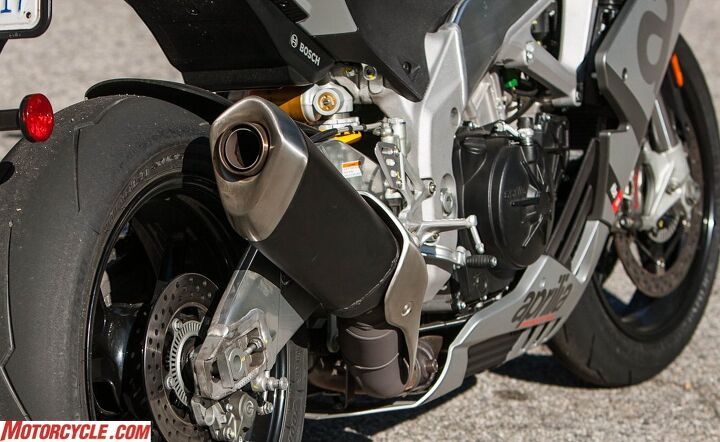 The sound that comes out of that exhaust is one of the most thrilling in all of motorcycling. The sound that comes out of that exhaust is one of the most thrilling in all of motorcycling.Ultimately lap times are what matter at the racetrack. Here the battle was close, but unanimous for the RSV4 RR. Both Tom and I set our quickest lap aboard the Aprilia, with Tom 1.4 seconds quicker and yours truly 0.8 second faster than our best times on the Kawasaki. The different tires didn’t play much of a factor either, as neither Tom nor I felt one set held us back any more than the other. The major reason we lapped faster on the Aprilia was the difference in power output, the Aprilia offering loads more grunt off corner exits compared to the Kawasaki. Interestingly, the GPS data says the Kawasaki peaked at 158 mph on the front straight while the Aprilia could “only” muster 152.3 mph. Traffic played a part in the Aprilia’s speed, but regardless, the Kawi would have required a much longer straight to make up the gap the RSV pulls out of each corner. Thinly Veiled Track Weapons Sure, by virtue of having lights, mirrors and license plates, both bikes are technically legal for use on public roads, but as I’ve stated before: Sportbikes are Terrible on the street. Both bikes have virtually the same seat height, 33 inches, but the feeling from the saddle is drastically different between the two. The Aprilia makes it perfectly clear it’d rather be at the track, perching the rider high above the bars with a commanding view of the road ahead. The downside to the great view is the pressure it puts on the wrists with the clip-ons in their track-ready position. To make matters worse, the seat’s “as cushiony as tempered-steel,” says Roderick, “and the seat’s edges do their best to slice through your hamstrings.” For as much as we adore the thing on the track, you better have some built-in cushioning of your own (if you catch our drift) if the RSV4 is to be your choice for the street. 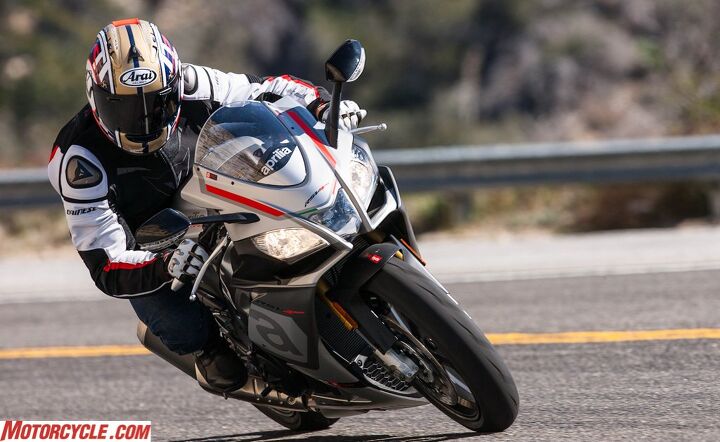 The broad spread of usable power we appreciate from the Aprilia at the track is even more important on the street, where it’s rare one will ever rev near redline. The broad spread of usable power we appreciate from the Aprilia at the track is even more important on the street, where it’s rare one will ever rev near redline.The ZX-10R is relatively comfortable by comparison, its rider not perched so high and the seat offering a touch more padding. There’s weight on the wrists here too, but it’s not nearly as pronounced as on the RSV4. Tooling down the freeway, the Kawi is easily the one we’d rather be on due to its more comfortable ergos. Engine heat is another annoyance with the RSV that wasn’t an issue at the track. Waiting at a stop light, the heat radiating from the hot engine below can cook the thighs. It’s a nice feeling on cold rides but brutal come summer time. It’s enough to be considered a “major drawback” in Tom’s eyes. Meanwhile, the ZX nicely channels engine heat away from the rider so its effects at a stop are far less noticeable. But waiting at lights is the precursor to playing in the canyons, where the traits we noticed at the track carry over. Neither bike leaves anything to be desired in the handling department, though we noticed the Aprilia’s Sachs shock was firmer over rough patches of road. Playing with the clickers quickly solved that issue, but interestingly the ZX-10R’s settings didn’t need to be changed at either venue. 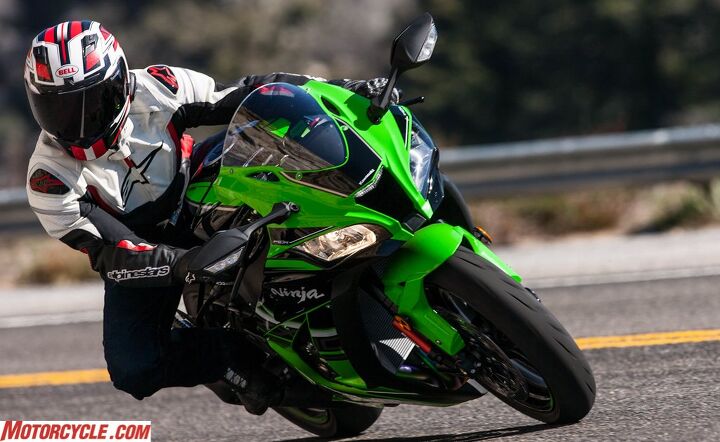 Kawasaki did a commendable job tuning its latest suspension on the ZX-10R to be both compliant on the street and controlled on track. Kawasaki did a commendable job tuning its latest suspension on the ZX-10R to be both compliant on the street and controlled on track.What it came down to, again, was mid-range power. Where the Aprilia could finish a turn and power out, the Kawasaki rider would ask for acceleration and face a delay before the surge kicked in, depending, of course, on the speed of the corner and the gear selected. We’d bet a simple sprocket change could transform the Kawasaki’s attitude, but stock-for-stock, this is the 10R’s biggest setback. There Can Be Only One All in all, we salute Kawasaki for the transformation it’s given to the ZX-10R compared to the model it replaces. It’s convincingly better in practically every aspect. The electronic updates place it on par with the top of the superbike field, and as a starting point for modifications, there’s huge potential for it. As a streetbike, the Kawasaki is more comfortable than the Aprilia, dissipates heat better, and even has usable mirrors. And to our eyes, it even looks better, too. “I have to admit,” Tom says, “I found the KRT edition incredibly attractive. The Ninja’s new bodywork is very stylish, while the graphics are aggressive without being gaudy.” 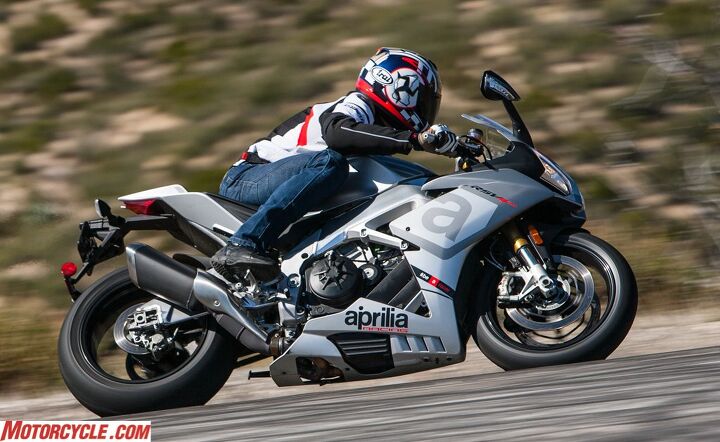 We’ve long been fans of Aprilia’s RSV4, and the many updates to the platform in 2015 have vaulted it another level higher. The 2016 RR is one hell of a motorcycle. We’ve long been fans of Aprilia’s RSV4, and the many updates to the platform in 2015 have vaulted it another level higher. The 2016 RR is one hell of a motorcycle.The love for both machines is displayed on the official MO scorecard too, as the Aprilia’s 93.7% final score barely edged out the Kawi’s 91.0%. However, it’s the Aprilia RSV4 RR that shines brightest. Its lovable handling isn’t topped by the Kawi, and it’s almost unfair how well its engine performs. For only $200 extra over the 10R, we’d choose the RSV4 and put up with its more limited dealer support for its valve checks than what’s offered from Kawasaki (recommended every 12,000 miles for the Aprilia; 15,000 miles for the Kawasaki). “With the changes Aprilia made to last year’s model,” Tom notes, “the RSV is simply hard to beat no matter what bike we’re comparing to. In this contest, were I given $16,000 and a choice between these two motorcycles, the decision for me would be easy; Aprilia.” 2016 Aprilia RSV4 RR+ Highs</p>
43mm SACHS upside down units fully adjustable. Wheel travel: 4.7 in.43mm inverted Balance Free Fork, adjustable stepless rebound and compression damping, spring preload adjustability. 4.7 in travelRear SuspensionAluminum alloy swingarm. SACHS piggyback shock absorber with adjustable spring preload, compression, rebound damping and length. Wheel travel: 5.1 in.Horizontal back-link with Balance Free gas-charged shock, stepless, dual-range (low-/high-speed) compression damping, stepless rebound damping, fully adjustable spring preload/4.5 inFront BrakeDouble 320mm lightweight stainless steel floating discs. New M430 Brembo monobloc radial calipers with 4 opposed 30mm pistons. Sintered pads. New radial master cylinder. Metal braided brake line.Intelligent Braking (KIBS), Brembo dual semi-floating 330mm discs with dual radial mounted M50 monobloc 4-piston calipersRear Brake220mm rotor. Brembo twin-piston caliperKIBS-controlled, single 220mm disc with aluminum single-piston caliperFront Tire120/70-17 Pirelli Supercorsa SP (Road compound)120/70-17 Bridgestone RS-10 R (Road compound)Rear Tire200/55-17 Pirelli Supercorsa SP (Road compound)190/55-17 Bridgestone RS-10 R (Road compound)Rake/Trail24.5 deg/4.1 in25 deg / 4.2 in.Wheelbase56.4 in.56.7 in.Seat Height33.6 in.32.9 in.Curb Weight (Claimed)456 lbs. (398 dry + 29.4 for 4.6 gal fuel = 427.4454.2 lbs.Fuel Capacity4.9 gal.4.5 gal.ABSXXCornering ABSMagnesium wheelsForged aluminum wheelsYesTitanium connecting rodsTitanium valvesXAluminum fuel tankSmartphone appXElectronic suspensionQuickshifterXXClutchless downshift abilityPower modesXXTraction controlXXSlide controlLaunch controlXXWheelie controlXXEngine brake controlXInertial Measurement UnitXGPS telemetryVia smartphone appCorner Management FunctionX 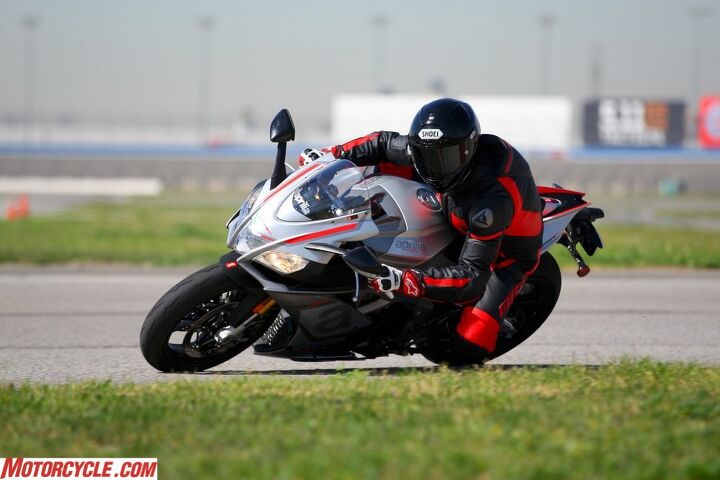 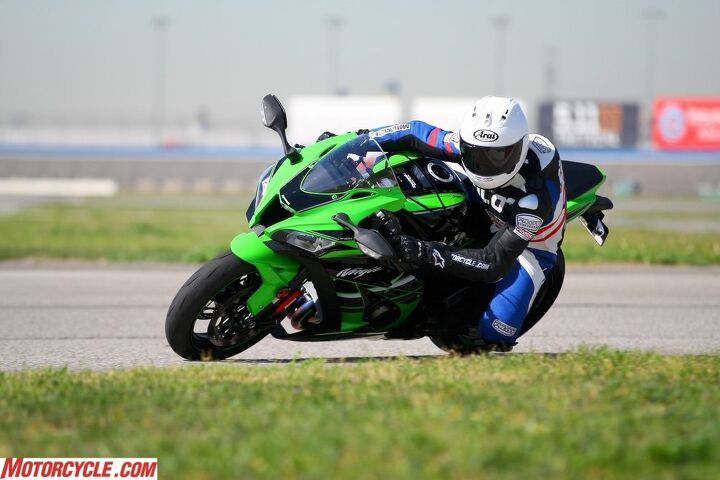 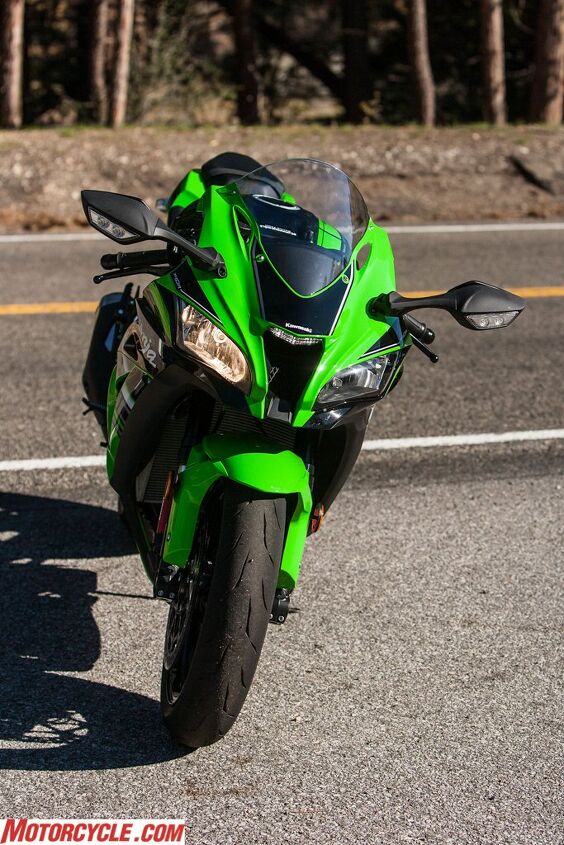 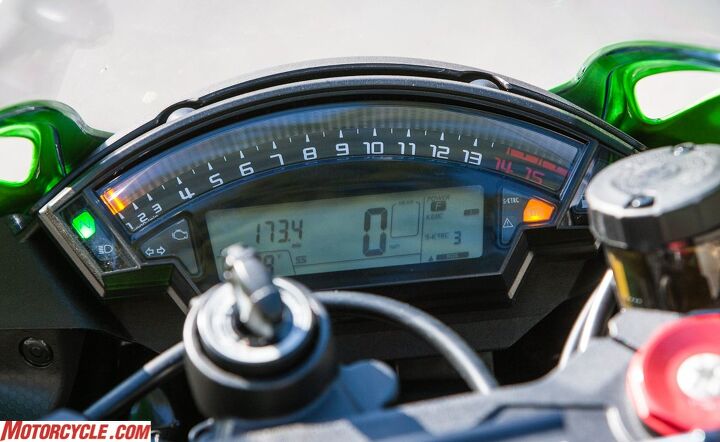 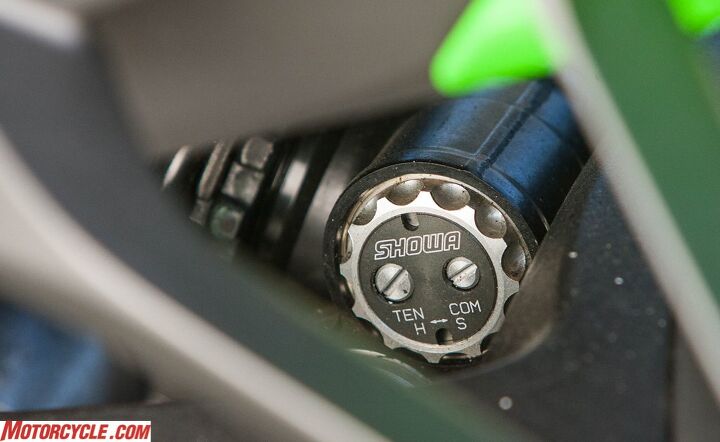 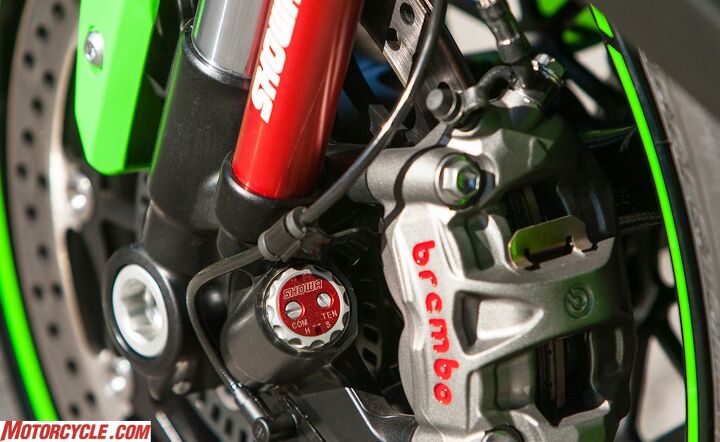 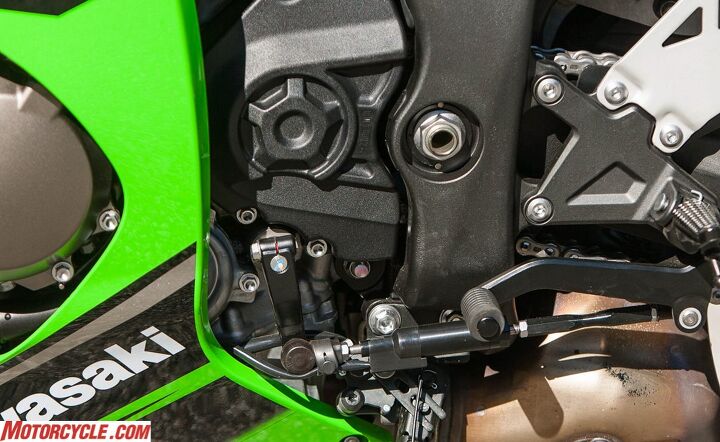 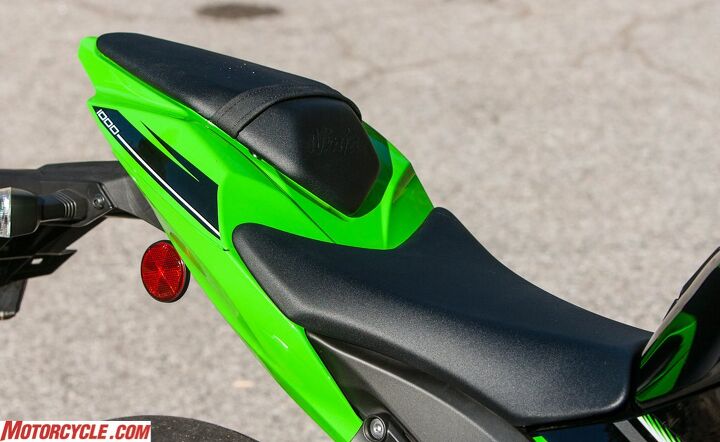 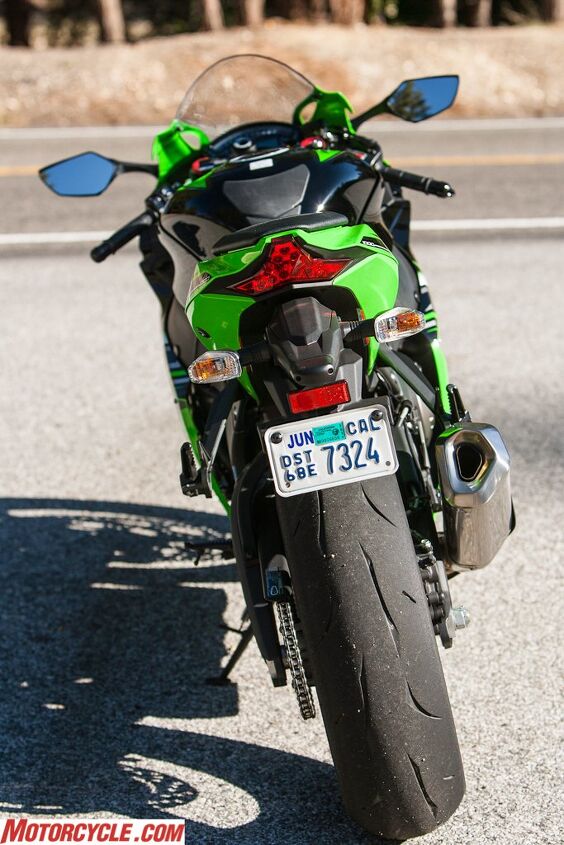 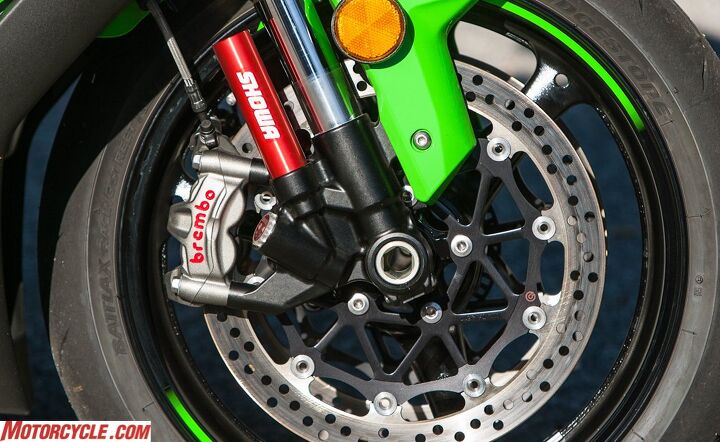 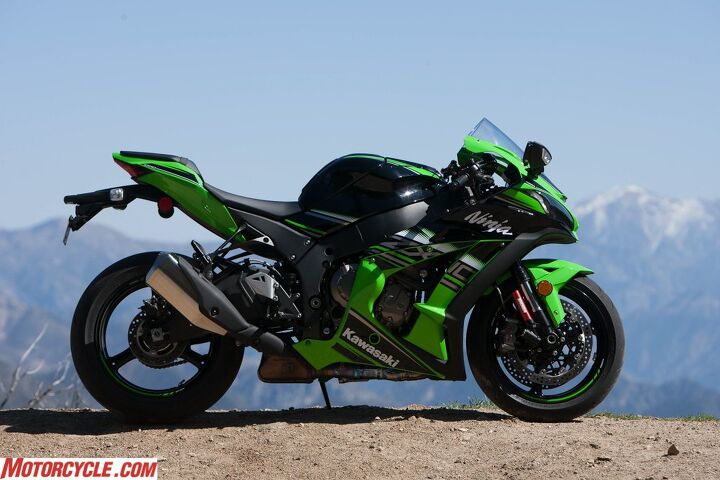  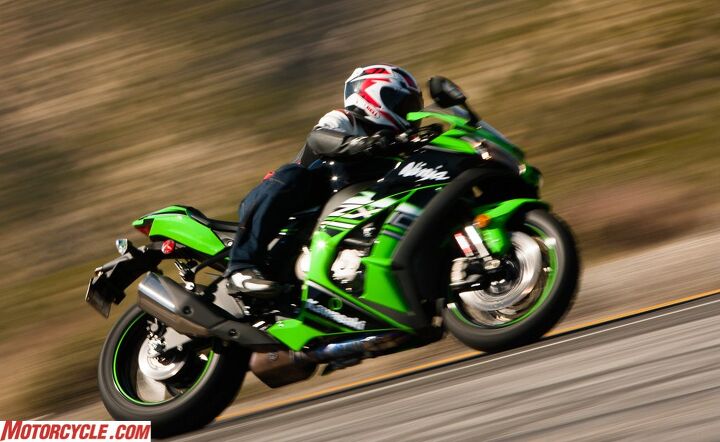  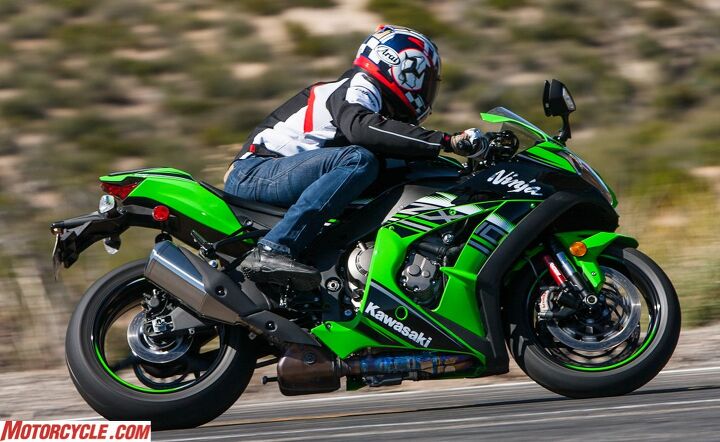 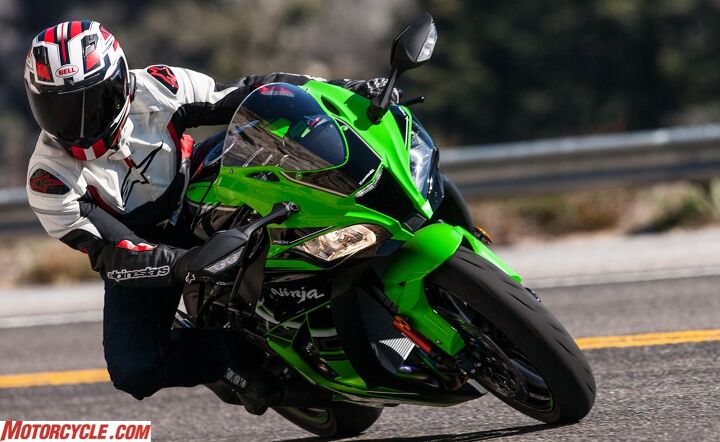 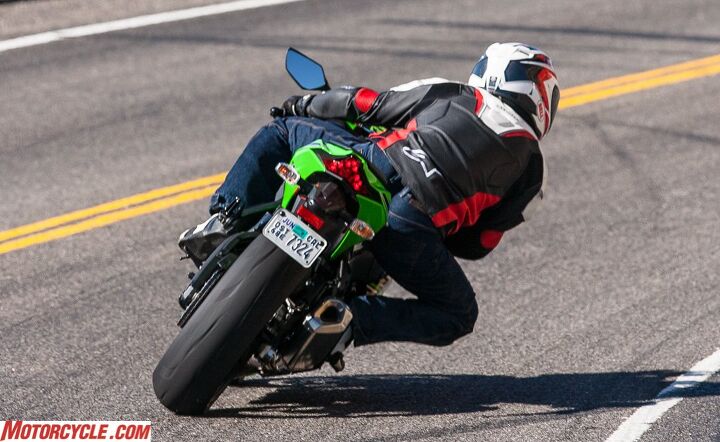 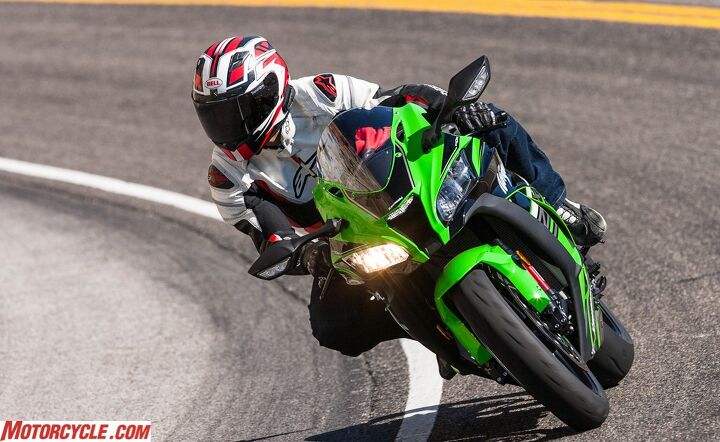 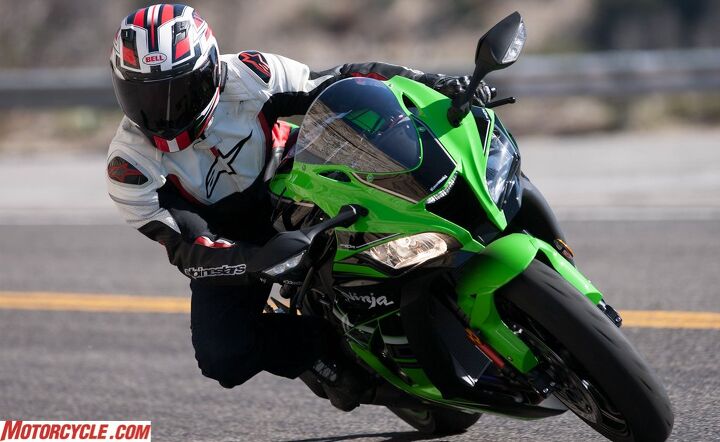  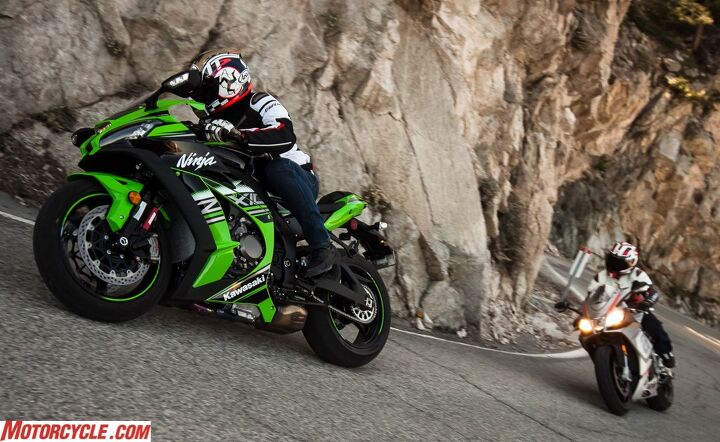 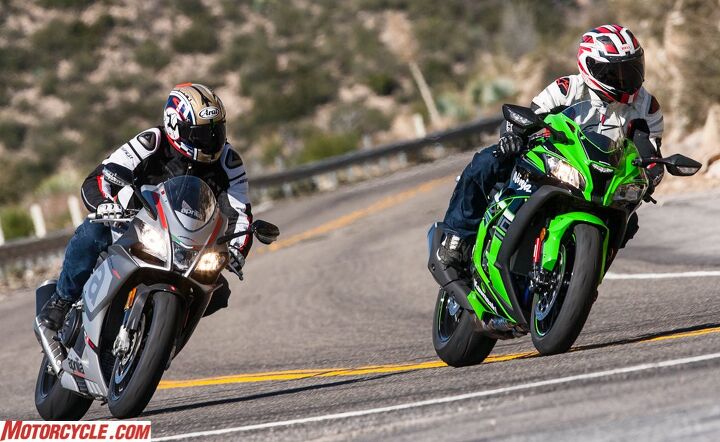 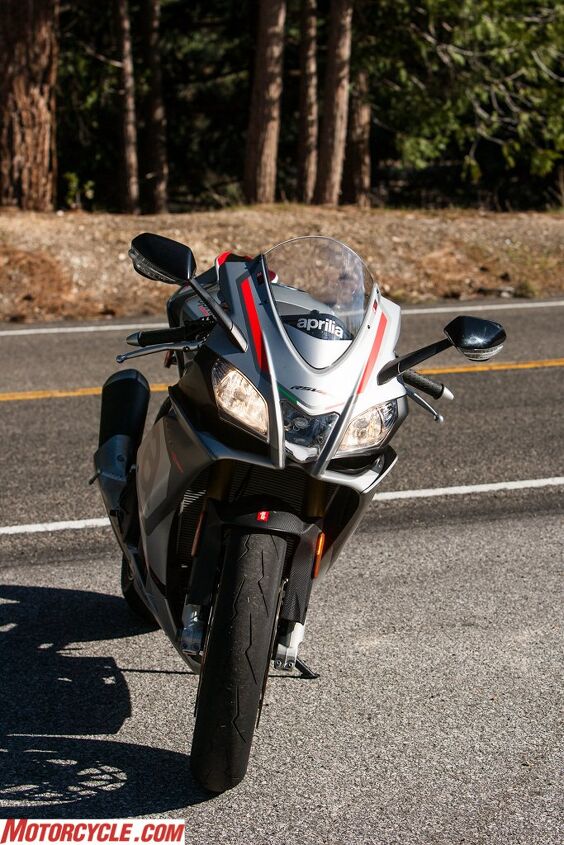 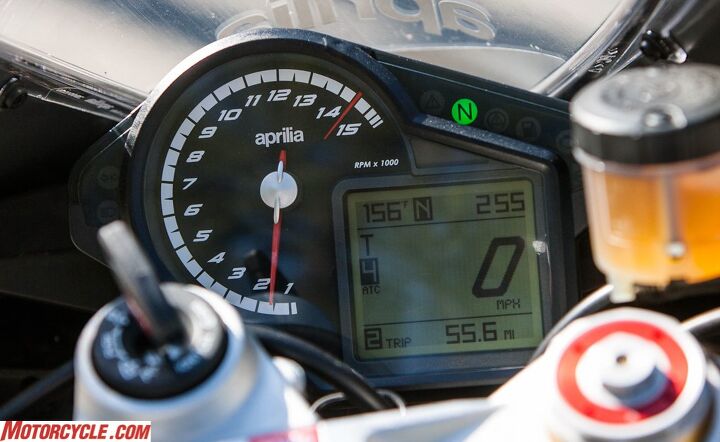 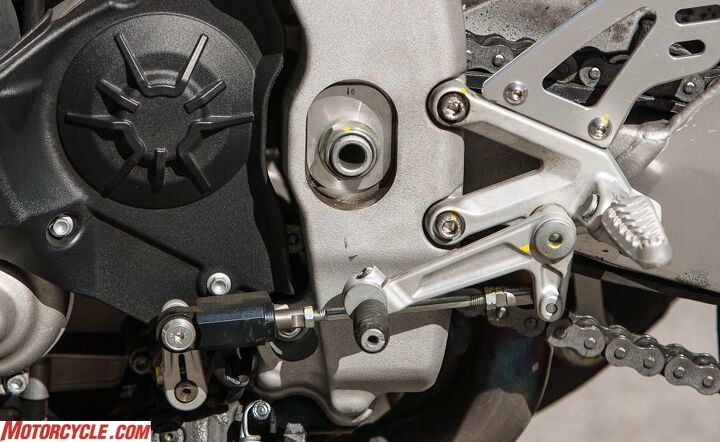 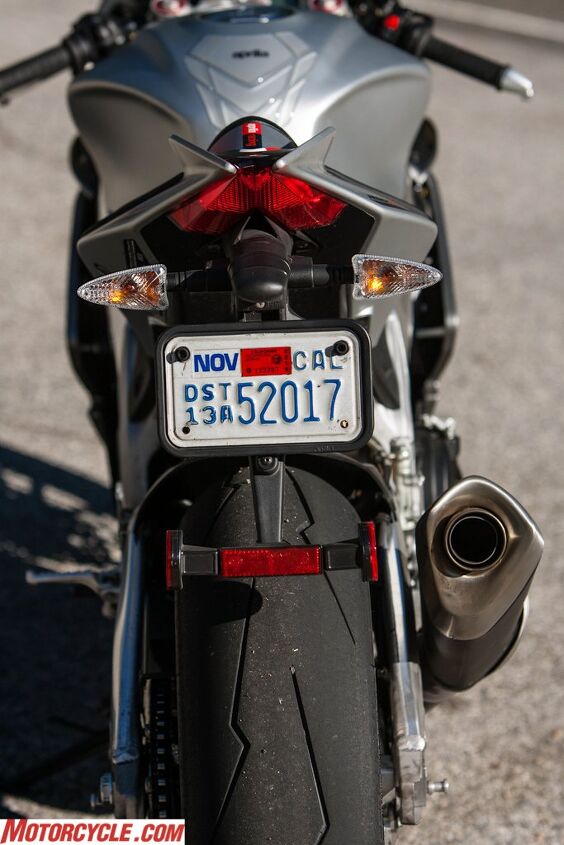 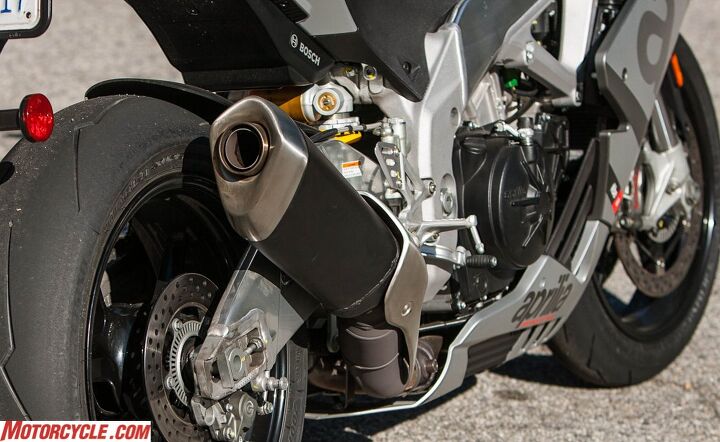 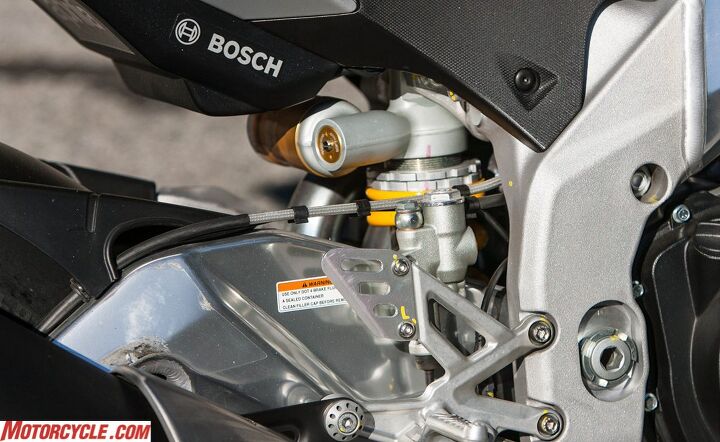 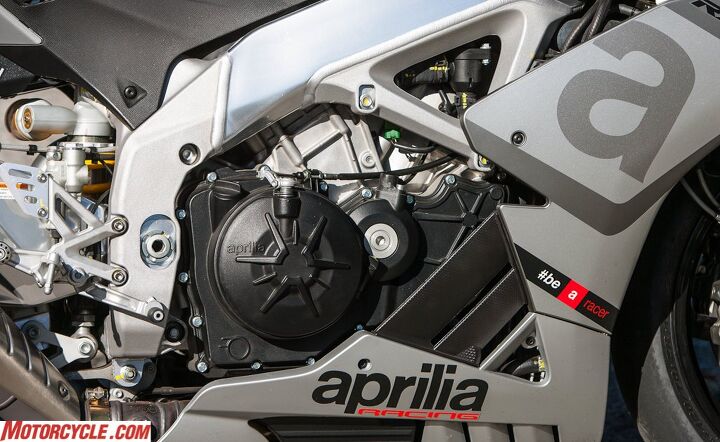 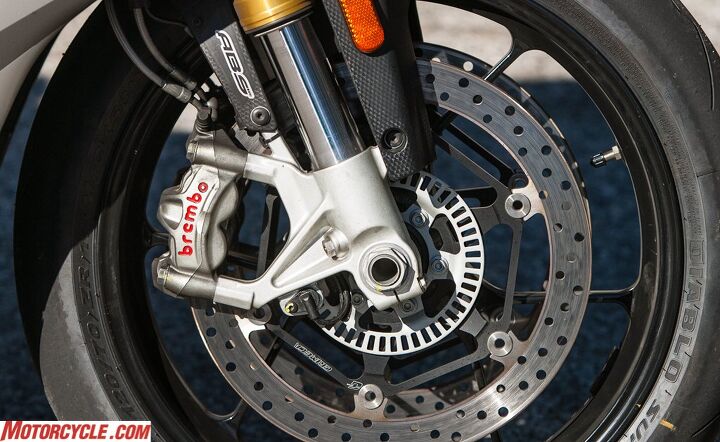 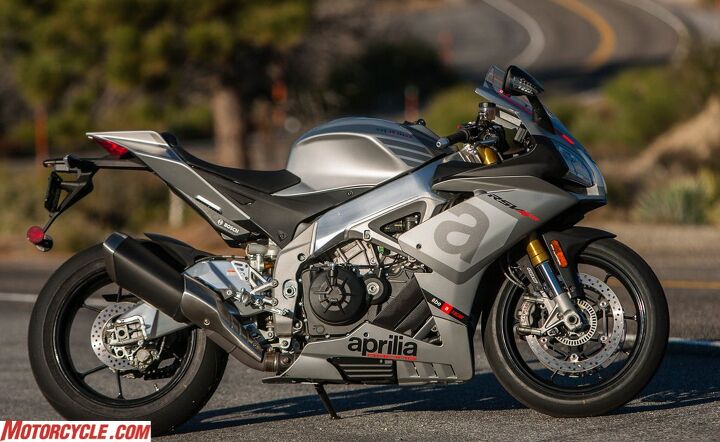 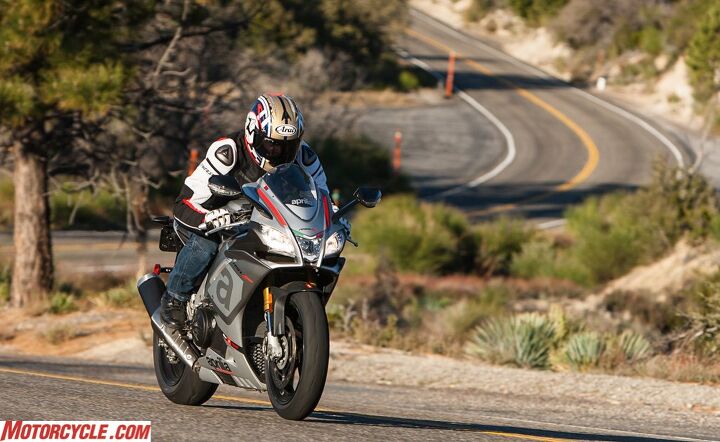 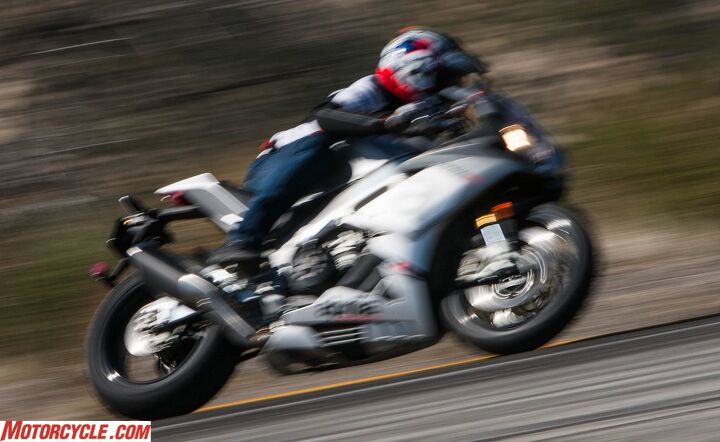 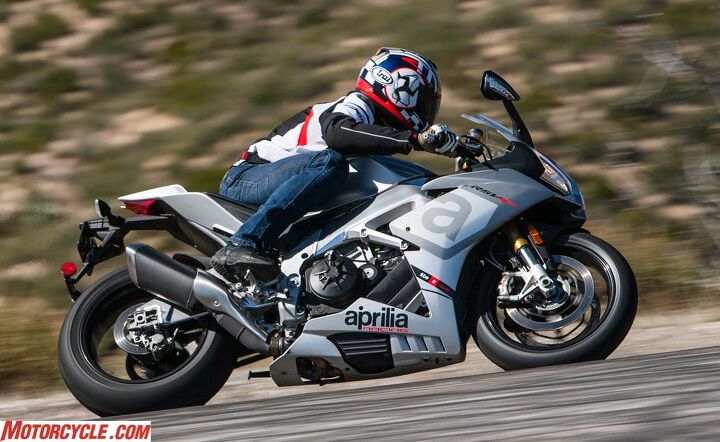 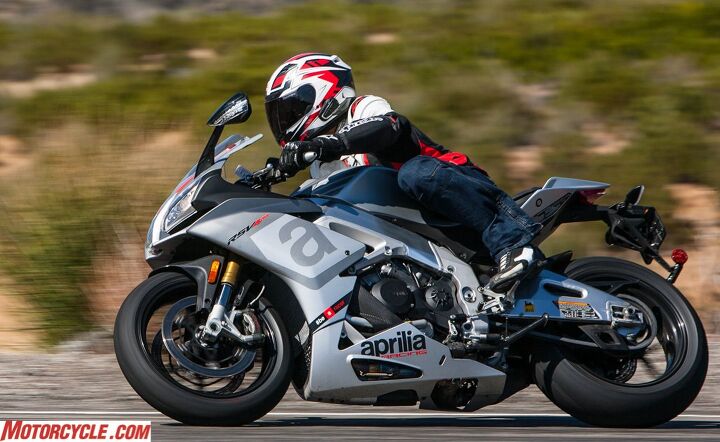 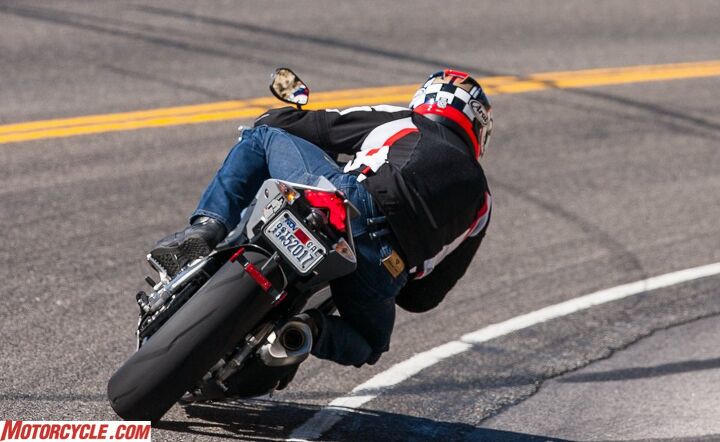 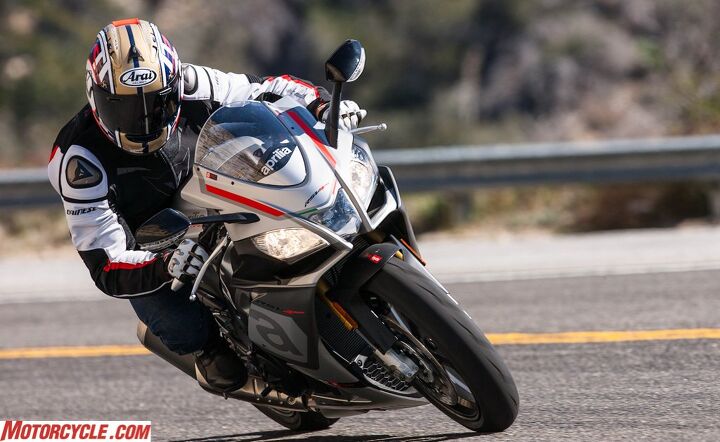  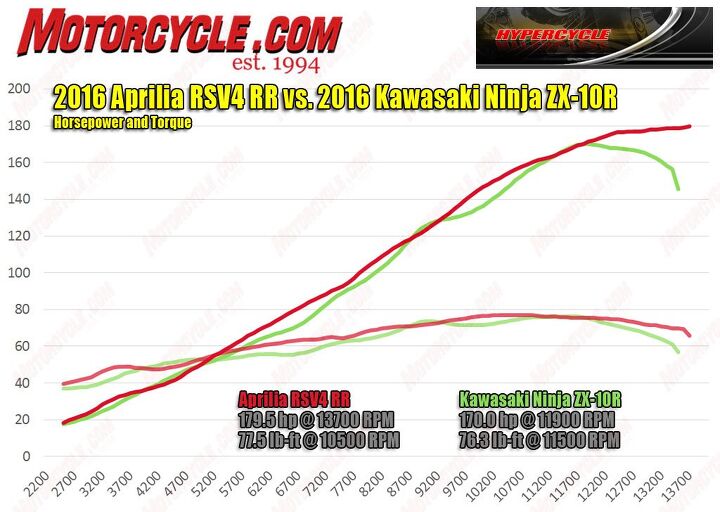 The $17,000 Superbike Faceoff appeared first on Motorcycle.com. The $17,000 Superbike Faceoff appeared first on Motorcycle.com.Click here for full story...
__________________________________________________
I'm a bot. I don't need no stinkin' signature... |
|
|

|
 |
 Similar Threads
Similar Threads
|
||||
| Thread | Thread Starter | Forum | Replies | Last Post |
| [topix.net] - $1,000,000 Hoka Hey Motorcycle Challenge | Ninjette Newsbot | Motorcycling News | 0 | November 5th, 2010 11:40 PM |
| [roadracingworld.com] - Lucas Oils Will Also Sponsor $40,000 Superbike Challenge Supp | Ninjette Newsbot | Motorcycling News | 0 | April 16th, 2010 04:10 PM |
| [roadracingworld.com] - Honda Posts $35,000 Championship Bonus In New WERA Superbike | Ninjette Newsbot | Motorcycling News | 0 | March 1st, 2010 02:10 PM |
| [roadracingworld.com] - Superbike World Championship Raises 15,000 Euro For Earthquak | Ninjette Newsbot | Motorcycling News | 0 | July 10th, 2009 09:10 AM |
| [motorcycle.com] - Love Ride 25 raises $1,000,000 | Ninjette Newsbot | Motorcycling News | 0 | November 11th, 2008 02:43 PM |
|
|